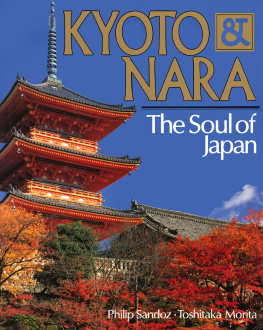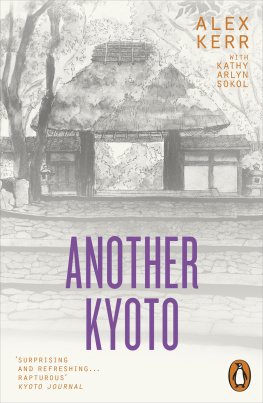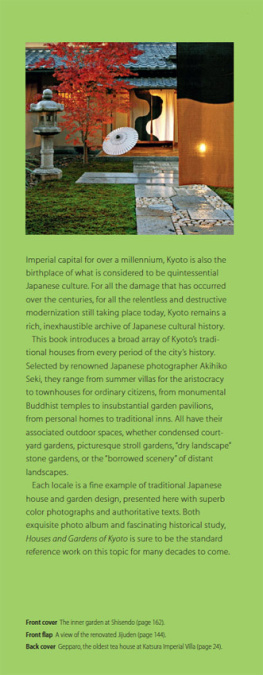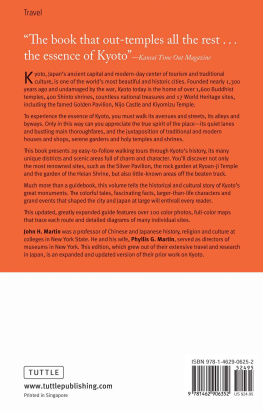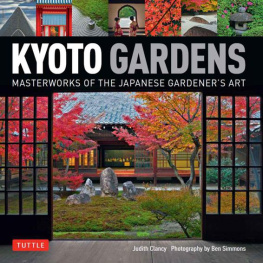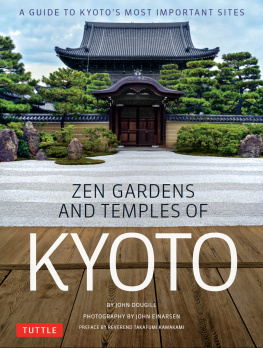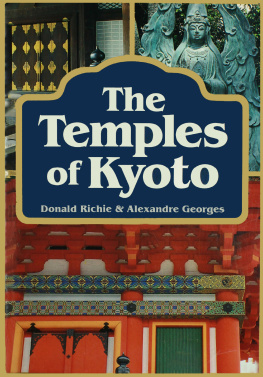Philip Sandoz - Kyoto & Nara The Soul of Japan
Here you can read online Philip Sandoz - Kyoto & Nara The Soul of Japan full text of the book (entire story) in english for free. Download pdf and epub, get meaning, cover and reviews about this ebook. year: 2013, publisher: Tuttle Publishing, genre: Science. Description of the work, (preface) as well as reviews are available. Best literature library LitArk.com created for fans of good reading and offers a wide selection of genres:
Romance novel
Science fiction
Adventure
Detective
Science
History
Home and family
Prose
Art
Politics
Computer
Non-fiction
Religion
Business
Children
Humor
Choose a favorite category and find really read worthwhile books. Enjoy immersion in the world of imagination, feel the emotions of the characters or learn something new for yourself, make an fascinating discovery.
- Book:Kyoto & Nara The Soul of Japan
- Author:
- Publisher:Tuttle Publishing
- Genre:
- Year:2013
- Rating:5 / 5
- Favourites:Add to favourites
- Your mark:
Kyoto & Nara The Soul of Japan: summary, description and annotation
We offer to read an annotation, description, summary or preface (depends on what the author of the book "Kyoto & Nara The Soul of Japan" wrote himself). If you haven't found the necessary information about the book — write in the comments, we will try to find it.
The cities of Kyoto and Nara are known throughout the world for their extraordinary beauty.
In Kyoto and Nara: The Soul of Japan, their modern state of serenity is well illustrated with depth and distinction in the photographs of Toshitaka Morita. Commentary by Philip Sandoz provides essential background information about the two historic cities.
Following the books carefully laid-out design, the reader is taken from season to season and from the past to the present in a way that will remind onetime visitors of the peace and calm they experienced in Shinto shrines and Buddhist temples, in tranquil gardens and elegant inns. Future visitors will find greater reason to finally take the trip they have dreamed of, to walk the worn paths past statues of smiling foxes, rows of red gateways, and roofs of tile shaped like cresting waves.
The seasons, the centuries, and the social state of the country have brought numerous changes to these two former capital cities. Still, Kyoto and Nara possess enough proof of former days of glory that even a first-time visitor will recognize that they are indeed the soul of Japan. In this volume photographer Toshitaka Morita and writer Philip Sandoz have recorded that soul admirably.
Philip Sandoz: author's other books
Who wrote Kyoto & Nara The Soul of Japan? Find out the surname, the name of the author of the book and a list of all author's works by series.

